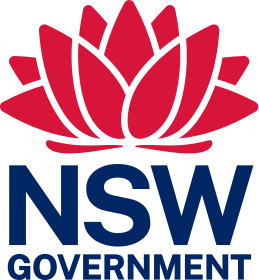Regional Roads and Transport Recovery Package
Image
Image controls:
The package helps communities become more resilient to natural disasters by investing in building better infrastructure to improve transport networks across northern NSW.
The NSW and Australian Governments are providing infrastructure betterment funding to regional Local Government Areas to repair or build-back an asset to better withstand future natural disasters.
The core values of betterment funding are to enhance resilience, generate productivity, and deliver positive economic and social outcomes for the region.
How will they do this?
- Resilience: Reduce the risk of impact to an asset over its lifecycle to better withstand natural disasters, and improve the ability to respond, recover and adapt after asset disruption.
- Productivity: Maintain or improve the level of service and sustainable function that an asset provides.
- Economic: Achieve net benefits across the asset lifecycle based on the betterment value proposition and provide a return on investment.
- Social: Maintain or improve a community’s ability to function during and after a disruption to an asset.
Program objective
The $312.5 million Regional Roads and Transport Recovery Package (RRTRP) will fund the planning, development and delivery of priority local and state transport infrastructure resiliency works.
The RRTRP is applicable to Eligible Transport Infrastructure directly damaged or impacted by Australian Government Reference Number (AGRN) 1012 Natural Disaster event, covering February and March 2022 Severe Weather and Flooding across northern NSW.
Together with the Department of Regional NSW’s $200 million Infrastructure Betterment Fund, the RRTRP is the first of its kind in NSW.
How funding can be used
RRTRP funding is available for transport infrastructure resilience improvements (referred to as betterment activity). That is, resilience improvements that are in addition to the repair and reconstruction of damaged road and transport assets.
More information about the programs can be found in the RRTRP Guidelines (see the ‘Resources’ section below).
Program outcomes
The program improves the resiliency of the regional transport network to the continuing impacts of natural disasters by:
- strengthening the regional transport network’s capacity to withstand natural disasters
- improving the reliability of the regional transport network for regional communities during and after natural disaster events
- enhancing the adaptability of the regional transport network during and after natural disaster events
- improving the regional transport network’s ability to respond and recover when natural disasters do occur.
Projects must start within 12 months of executing the funding deed and all projects must be completed within the Allowable Time Limit (ATL) of 30 June 2027.
Project delivery timeline
The extension to the Allowable Time Limit (ATL) under the RRTRP has been formally approved. This means the Program end date has been extended to 30 June 2027.
While this extension offers broader support, councils are still expected to deliver works in line with the timeframes outlined in their individual funding deeds and should not assume any further extensions will be available. Funding for works beyond 30 June 2027 may be at risk.
Where changes to project completion dates are required, councils must formally submit a variation request for Transport’s consideration and approval. Please ensure that any such requests clearly show the need for extended timeframes and are submitted as early as possible.
Please also note that, to allow sufficient time for Transport to complete the required program closure and reporting activities, all projects must be open to traffic by 31 March 2027.
Funding applicants
Twenty-six northern NSW Local Government Areas (LGA) were eligible to make applications for funding:
- Armidale
- Ballina
- Bellingen
- Byron
- Central Coast
- Cessnock
- Clarence Valley
- Coffs Harbour
- Dungog
- Glen Innes Severn
- Kempsey
- Kyogle
- Lake Macquarie
- Lismore
- Maitland
- Mid-Coast
- Muswellbrook
- Nambucca
- Newcastle
- Port Macquarie-Hastings
- Port Stephens
- Richmond Valley
- Singleton
- Tenterfield
- Tweed
- Upper Hunter.
Documents
Some documents on this page may not comply with accessibility requirements (WCAG).
If you are having trouble accessing information in these documents, please contact us.
Media releases
- 14 August 2025 – Lismore flood recovery hits major milestone
- 14 August 2025 - Tweed flood recovery all in a good cause(way)
- 30 January 2025 - Improving flood resilience in Kempsey Shire - new bridge for Dungay Creek causeway
- 18 December 2024 - Raising Grieve Crossing bridge from flood risk
- 17 December 2024 - Building resilience into Bellingen roads
- 6 December 2024 - Road and opportunities open at Naughtons Gap
- 24 October 2024 - Building resilience against flooding in Tenterfield
- 23 October 2024 - Improving flood resilience around Singleton
- 11 October 2024 - Making the Gwydir Highway more resistant to disasters
- 23 September 2024 - Road upgrades pave the way for safer journeys for Glen Innes motorists
- 20 September 2024 - Wisemans Ferry Road remediation work forging ahead
- 11 September 2024 - New Melville Ford bridge ensures safer and more reliable connection for generations to come
- 15 August 2024 - Funding boost to improve flood resilience in Dugong
- 11 June 2024 - Get ready for a more resilient Clarence Way
- 9 May 2024 - Major $4.76 million improvements to Mullumbimby Road starting in December 2024
- 15 April 2024 - New flood-resilient bridge to be constructed at Melville Ford
- 11 March 2024 - Flood-damaged North Coast infrastructure to be built back better
Videos
April 2024 - Betterment of Naughtons Gap project commences
Contact us
Email: rrtrp@transport.nsw.gov.au
